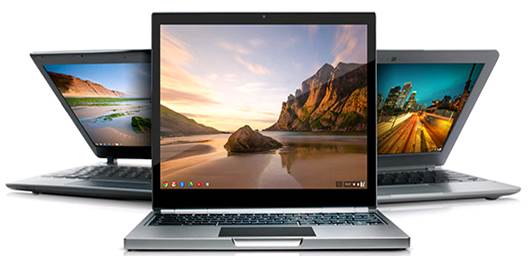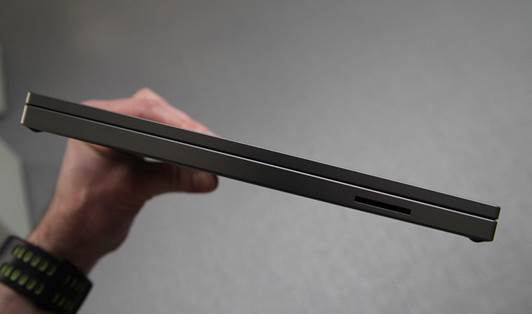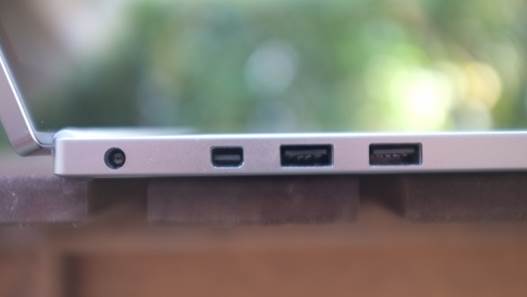We have had a good/bad feeling about Google
Chromebook since we had a chance to touch the first one in 2011 – Samsung
Series 5. We like the concept, but hate the limited functionalities provided by
your $500 investment budget. Since then, this basic laptop series has improved
much, and the basic operating system that those laptops run has progressed,
too, all of which led to our current favorite product: Samsung Chromebook.
In that laptop review, we concluded that
"the price at $249 seems to be suitable for this type of devices."
So, imagine our frustration when Google unveiled a very similar model of the device
but then more expensive. It’s a very expensive price. It is a high-end product
with incredible design quality, an incredible screen and an unbelievable price.
Will a Chromebook be worth being paid attention to if it has the starting price
that is five times more than its greatest competitor? Let's figure it out.

Google
Chromebook Pixel
Hardware
Of course, this is a redirection. If you plan
to spend a large amount of money for a laptop with an incredibly limited operating
system, it will be best to bring home something that is incredibly well made. In
this aspect, the Chromebook Pixel is completely successful. Excuse us for
saying our stereotypes; Google has gone from zero to hero with the Pixel. It is
really something worth watching.
The first impressions on us were a laptop with
an incredibly light weight. Apple's MacBook Pro series, with its aluminum layer
carved correctly, has long been the benchmark that other laptops must be
compared when it comes to a rugged feel. In the first attempt, Google succeeded
in comparing that innate sense of integrity with the Pixel and even outdid it
in some respects.
It is made entirely of aluminum processed by
machines, anodized in a dark color, similar to the alloy used to make guns
which successfully fills the gap between the sophistication and the wonder.
Everything is very angular; the vertical edges that end in an unexpected way on
the horizontal surface make the typing surface. In fact, the only thing that is
not crossed by the right angles is the cylindrical swivels that almost run
along the entire width of the device, but fortunately the edges of the entire
laptop are just round enough to keep themselves from pressing on your wrist
uncomfortably. Protection from scratches collected by typing has become quite a
nuisance in many modern aluminum computers.
A quick test on the hardness of the laptop is by
opening it, taking it on noth sides of the keyboard and trying to twist it. With
a mediocre product, you will hear a series of sound of discomfort emanated from
beneath the keys, and if you're really unlucky, you may get one or two
characters thrown out. The Pixel is not like that. Its torsional hardness is
really impressive for a thin and light computer.
The laptop size is 16mm thick (0.62 inches)
and it weighs 3.35 pounds (1.52kg). It can be well compared with the 13-inch
MacBook Pro with Retina, which we will offer to compete with this, which is
19mm thick (0.75 inches) and weighs 3.57 pounds (1.62kg). So it's thinner and
lighter, and with a 12.85-inch screen, whose 2,560x1,700 is very similar (which
we will discuss right now), but has lower performance. However, it is a real
match with the 13-inch MacBook Air when it comes to speed, and it is only
slightly thicker (0.06 inch) and heavier (0.39 pounds).

It
has an incredibly light weight.
The Intel Core i5 dual-core 1.8GHz processor
is the only one available here, along with 4GB of DDR3 RAM and in general it provides
abundant power to control the very minimal operating system, which is installed
on the hard 32GB or 64GB SSD. The option for larger capacity is only available
if you select the $1449 laptop, which also adds LTE that is compatible with
Verizon (with GPS). Both models have MIMO dual-band 802.11a/b/g/n with
Bluetooth 3.0. For those who prefer it physically, there are two USB ports on
the left (unfortunately, they are only 2.0) next to the Mini DisplayPort and a
3.5mm headphone jack. On the right side is the SD card reader, along with a SIM
card tray – provided you have paid to upgrade WWAN.
For those who do not like to take advantage of
the headphone jack, you have what Google calls "powerful speakers"
built in here although they are difficult to identify. They were integrated
somewhere under the keyboard, and believe it or not, the description
"strong" is quite suitable. You would not give your neighbors any reason
to complain if speakers are to be increased to the maximum volume level, and
you will also not need to worry about cracking the walls with the bass, but here
the loudness is good and sounds great. The speakers are at least a match for
your mid-range Bluetooth speakers.

For
those who do not like to take advantage of the headphone jack, you have what
Google calls "powerful speakers" built in here although they are
difficult to identify.
In terms of receiving, Google also integrates a
microphone array around the device to proactively reduce noise, including a
microphone arranged to detect (and remove) the rattle of the keyboard when
you're typing while using Hangout or something like that. As there is no way to
selectively deactivate this microphone, we cannot be sure how great its effect will
be, but we can say that quite a lot of noise based on the QWERTY passed through
during our test calls. However, Google said they will continue to adjust the
behavior of the microphone, so let’s hope later it will improve.
What is built in the beveled surface is a
webcam located in the center of the top of the surface, next to a small status
LED, to let you know when Big Brother is watching. The last thing is the plug,
a fairly large power adapter that imitates Apple by including a removable part.
Here you can insert into it a two-pin connector or a longer 3-pin cable. The inspiration
is obvious, but we did not complain. It allows you to have a short model, easy
to pack on your jaunts and a bulkier model for those times you need to go farther
away.
However, we wish Google had taken inspiration
from Microsoft and Apple and included a certain type of magnetic power
connectors. We found that small plugs, with the traditional 1-pin connector,
tend to gradually slip from the laptop when the cable is stretched from the
left. Fortunately, there is a flashing light on the connector to let you know
when the laptop is charging or charged and when it slides far enough to lose
connection.